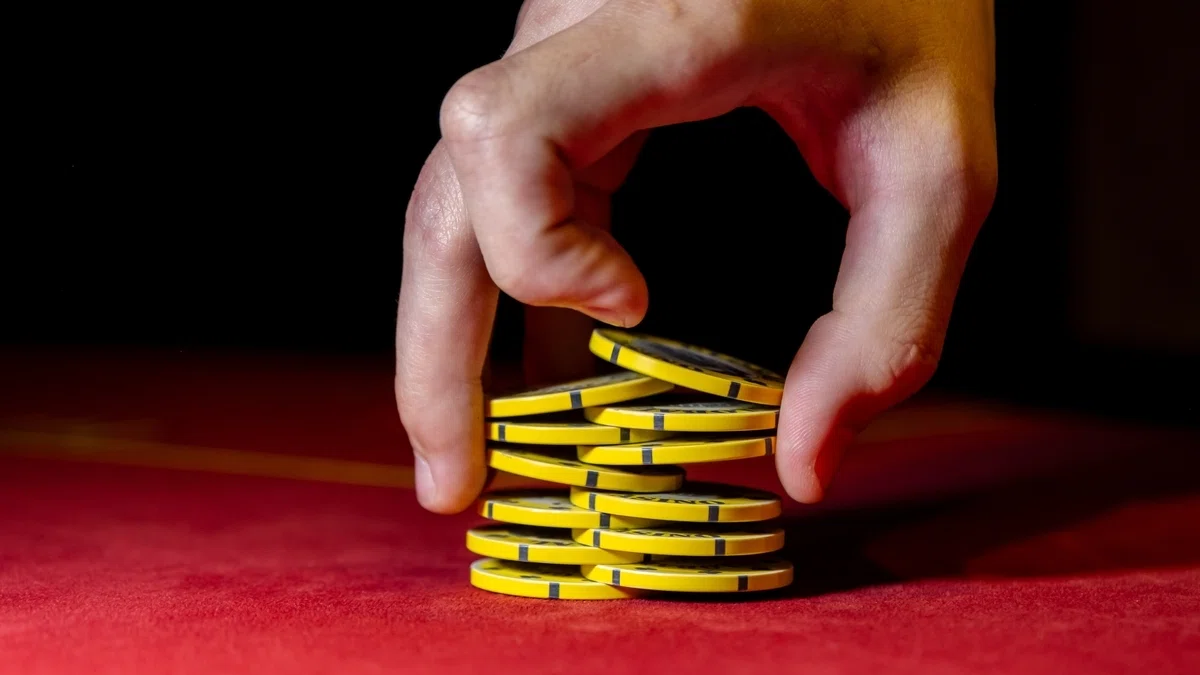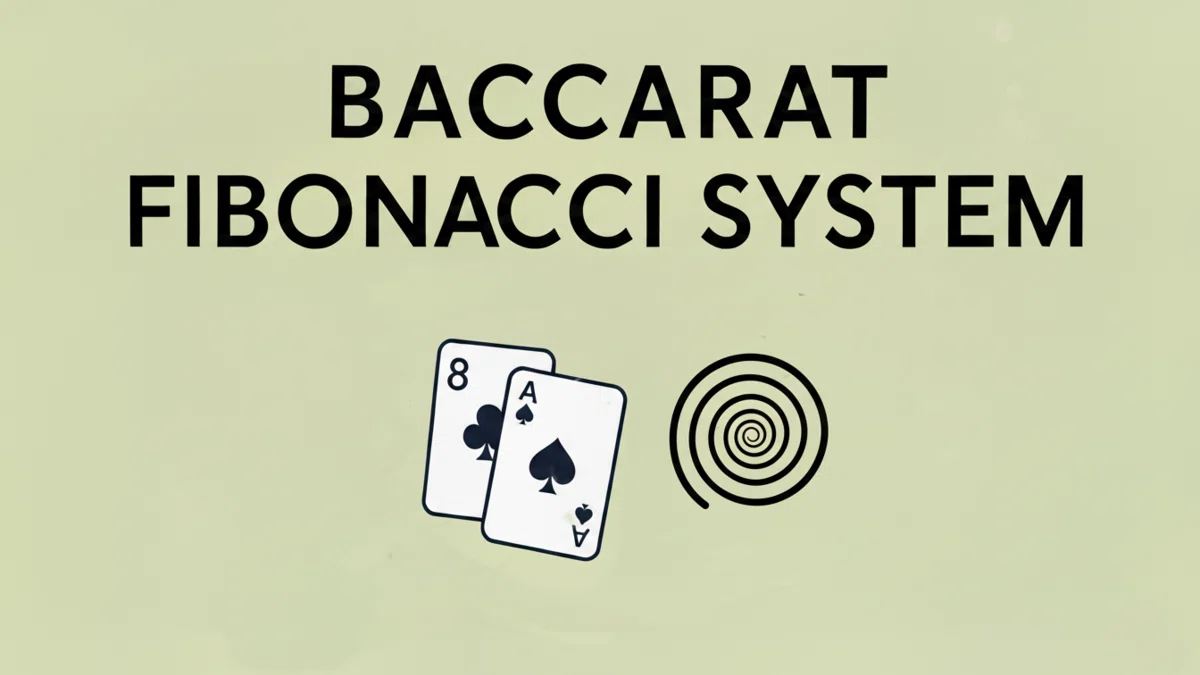Already know the Fibonacci system or simply looking for a smart way to manage your baccarat bankroll?
Good news: the Fibonacci bankroll management system can be used at the baccarat table.
Keep reading to understand:
- How does Baccarat Fibonacci work
- An example of a real Fibonacci sequence at the baccarat table
- Pros and cons of this method
Let’s get into it.
What is the Fibonacci System?
Before getting into details, you’ll need to know what the Fibonacci system is and how to apply it to a game of baccarat.
The Fibonacci sequence is notable because it appears in a lot of mathematical and naturally occurring contexts. Everything from plant growth to the golden ratio follow the sequence, which is also the base of this bankroll management approach.
The sequence is quite simple – you start with zero and one, then add them together to get the next number. The first twelve numbers of the Fibonacci sequence are as follows:
- 0, 1, 1, 2, 3, 5, 8, 13, 21, 34, 55, 89
With the Fibonacci playing system, you use this sequence to dictate how much you play at the table, beginning with the number 1 (as you can’t play 0).
It’s typically played as a negative progression system, so you move up the sequence every time you lose.
Related Posts:
How Fibonacci Works When Playing Baccarat
Now you have some understanding of the Fibonacci system, let’s look at how it’d work in baccarat specifically. Let’s assume it’s punto banco, the most popular baccarat variant.
Before you put chips down, you first need to decide which hand you’re backing. Baccarat is played with two hands (the player hand and the bank hand), both controlled by the dealer. Despite its name, you as the player owe no loyalty to the ‘player’ hand, so you can back the bank if you think it’ll make a better hand.
This is where the Fibonacci playing system comes in. You’ll always start with playing 1 unit, which will represent a certain amount (e.g. 5, 10 or 15). This fixed amount will be represented by 1 unit.

Example of the Fibonacci Baccarat System in Action
Let’s translate the above into a realistic example that could happen at the baccarat table.
At the table, you start with one chip and lose. Time to play one chip again, but you get another loss. You play two chips, and then three, both part of a losing streak.
Three steps later, you’re now up to 13 chips but you still get no luck. Following the sequence, you add eight and 13 together to get 21. This is your next play. It wins this time, recouping your losses for the last six plays.
Note that if your win backed the banker, then your win may have a 5% commission taken off it.
Typically, the Fibonacci system demands players move back two spaces with every win. You move back two steps in the sequence, back to eight. If that wins, you’ll fall back to five for your next play. With this example, you’ve traveled down the sequence and bounced back after two wins.
You can find this session condensed into a table below.
| Play Sequence | Win/Loss | Profit |
|---|---|---|
| 1 | Loss | -1 |
| 1 | Loss | -2 |
| 2 | Loss | -3 |
| 3 | Loss | -5 |
| 5 | Loss | -8 |
| 8 | Loss | -13 |
| 13 | Loss | -21 |
| 21 | Win | 0 |
| 8 | Win | 8 |
| 3 | Loss | 5 |
This demonstrates why the Fibonacci system is so popular. It, like many other playing systems, provides a rigid formula that players can use to organise their game. It can also help with recouping losses sometimes, but this is never a guarantee, especially in the long-term.
The Pros and Cons of Fibonacci Baccarat Strategy
Pros
There are two major advantages of the Fibonacci system in baccarat. The first is that it’s an unchanging sequence that’s easy to remember, once memorized. Baccarat is one of the faster-paced card games, so having a strategy you can quickly remember and deploy is crucial.
The second advantage is that it gives you more chances to win before maxing out. For example, many steer clear of the Martingale Baccarat system because it can get out of control during a losing streak. That’s because your plays double each loss. This isn’t the case with Fibonacci, where the climb is more incremental. As a result, you have more runway to play on before hitting the table’s (or your own) limit.
Cons
With baccarat, a major disadvantage is the 5% commission that gets sliced off wins on the bank hand. Some play only the player hand, to maximize profits for the wins that do occur. The bank hand has a better house edge, so others try it regardless.
Another disadvantage is one that’s found with all playing systems – every play is subject to the house edge. This means the strategy has absolutely no bearing on how often you’ll win or lose at the table, it only suggests how you react to those wins and losses.
This is, of course, true regardless of the bankroll management system you pick, no matter if it’s Fibonacci, Paroli or Labouchere. Not even flat playing escapes probabilities.
Related Posts:
Wrapping Up
Now that you’ve read this guide, you’ve got another tool under your belt to better play baccarat. Managing the amount you’re playing each round should now be much less intimidating.
Since you’re already on a roll, why not keep reading our social casino guides? Stock up on all the knowledge and put it to the test at McLuck.com!
FAQ
Does the Fibonacci sequence represent chips played?
Yes, the Fibonacci sequence numbers typically represent how many chips you’ll play. This is because it’s low and accessible. If you’re used to playing more, you can assign your own unit numbers for the sequence. For example, if 10 is one unit, then your sequence could look like this: 10, 20, 30, 50, 80, 130, and 210.
What happens if I win my first Fibonacci Baccarat play?
If you win at the first step, then you can’t go back any further. Play at step one again, only moving down the sequence if you experience a loss. Then, if you get another win later, you move back two steps.
Does the Fibonacci system ever stop?
The Fibonacci sequence can continue endlessly, but the Fibonacci playing system can only go so far. Your mileage depends on how many chips you have, your tolerance for losing, and how high the table limits are at your chosen baccarat game.

